Le foto(copie) di Samuele Piccoli
Samuele Piccoli works mixing photography, photocopies, transfer techniques, collage and painting. The transfer of photocopies of photographs on drawing paper, using cleaning fluid/trichloroethylene or acetone, creates images with a pictorial look that I find very interesting. Samuele Piccoli then adds onto these photocopied photos some external elements, be they purely pictorial, collage, hand drawn, or brush strokes. He creates images which are half way between photography and painting, pictorialism and modernism.
When I met him he accepted to not only have a chat about Camera Obscura, but also to explain in detail the technical procedure he uses, which had raised my curiosity.
Fabiano Busdraghi: How did you start to take photographs? What’s your story as a photographer?
Samuele Piccoli: First of all I think I am more of an experimenter, rather than a proper photographer. I don’t want to limit myself in any way, so until possible, I want to escape the trap of definitions and categories.
Nevertheless, my story begins in the most classic of ways: around the age of 18 my uncle gave me an old, completely manual Russian reflex. I perfectly remember the joy I felt as I experienced placing images in focus, and that first experience opened up a whole new world for me. I then began my “career” as a classic lover of photography, inspired by shots in the National Geographic, until I had the extraordinary pleasure of meeting someone who opened my eyes on the ability of photography to look into your soul. I discovered a new world, all my preconceptions fell, my certainties crumbled, and all canons were overturned. The photographs became mine, whether one liked it or not.
Fabiano Busdraghi: How was your series of photographs/photocopies born?
Samuele Piccoli: It was a slow evolution, but it all goes back to my passion for the pinhole images. This miraculous instrument of expression (one should glorify it) allowed me to appreciate the work of Paolo Gioli, to discover the wonderful world behind polaroids, and most of all, to begin to experiment in a new discipline (that of polaroids) which was for me completely new.
One afternoon I was taking a pinhole macro polaroid of a rose, and as I was about to tear the negative from the positive, as usual, I realised that the movement wasn’t new to me. In fact it wasn’t. I had repeated that simple and dull movement hundreds of times, during my years in primary school. In fact we would often use acetone to transfer images from magazines to drawing paper, to later draw around them. When the acetone was dry, the parts of the magazine were then torn off just as you tear off a Polaroid. A simple and marvellous act, all in one.
This opened up an infinite number of new paths to follow, and I was thrilled, to say the least. However, the project was only at draft level, I had discovered the technique but had to find the message that suited the procedure best. Instinct and passion did the rest of the work.
A part from photography, I am an admirer of painting, and in that same day I was struck by a portrait by Sergio Flori and a photo by Claude Cahun very similar to a photocopy, and the epiphany occurred. I started to select various subjects from my archive, I photocopied them and transferred them on drawing paper. The results were encouraging, but too complacent. One day I found myself in front of a piece by Araki, I observed it, studied it, admired it. That technique gave me the courage and I finally decided to violate the last of seals: the sacredness of emulsion. From the overcoming of the last barrier, free from all conditionalities, I created these photo(copie)s.
Fabiano Busdraghi: This return to a gesture that belongs to your childhood, a sort of memory that remained in the movement of your hands, is very interesting. Can you expand on this subject?
Samuele Piccoli: I admit that I like to go against the tide, I don’t reject modernity a priori, I’d be crazy, but I love to use my hands, and not only the index in my right hand. I find great satisfaction in building what I need with the few tools available in my garage and with the help of others.
Maybe no one thinks about it, but I often realise that I tend to ignore the senses (tact and smell) because of the speed, but also the superficiality, with which we are forced to live. I am often in a hurry even while dedicated to a hobby, and most of all, I don’t stop to see the panorama that I’ve left behind me.



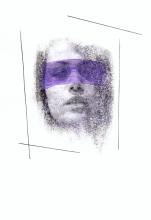
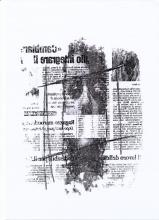
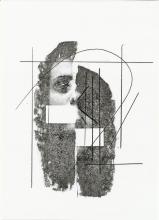
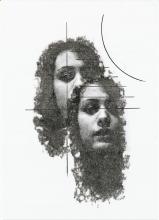
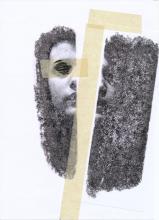

gorana
said, January 23, 2009 @ 7:08 PM :
Ciao Sammuele… mi interessa molto la tecnica della triellina avendola affrontata pure a scuola ma solo su carta… volevo chiederti se è possibile fare trasferimenti anche su altri materiali come legno, plexliglas? Ovviamente cercando di ottenere più o meno lo stesso risultato… se nn è possibile esistono altre tecniche che lo permettano?
grazie
Samuele
said, January 24, 2009 @ 12:33 PM :
Ciao, ho fatto delle prove su vetro, plexliglas, polistirolo, cartone e legno. La tecnica, basandosi sullo “scioglimento” del pigmento della foto grazie al solvente (trielina) e relativo trasferimento su un altro materiale, ha dei risultati diversi a seconda del grado di porosità e ruvidezza del supporto che accoglierà la foto. Essenzialmente tutti i materiali posso accogliere questo pigmento. Per esperienza ti posso dire che sul vetro si ha una notevolissima perdita di dettaglio ma il pigmento ti viene restituito con un effetto a “puntini” molto pittoresco, Sul legno ti puoi scordare l’immagine originale, idem per quanto riguarda il polistirolo. L’effetto più sorprendente si ottiene con il plexiglas, perchè praticamente restituisce quasi l’intera scala tonale, non si ha una perdita eccessiva di dettaglio, e su tutta la foto si forma una stana velatura tipo “figurina panini staccata da un vetro dopo 10 anni”.
Nadja
said, April 28, 2009 @ 8:31 PM :
Ciao Samuele,
ho una domanda: hai per caso fatto la prova della tecnica della trielina anche con la tela?
ti spiego: mi è tornata in mente questa tecnica imparata alle medie perchè volevo trovare un modo abbastanza veloce, ma allo stesso tempo di effetto per riportare delle immagini stampate su normale carta da stampante, magari in maniera speculare in modo da tornare ‘dritta’ sulla tela di immagini tipo quadri o icone per dare l’aspetto artistico..
Che dici, può funzionare con tela per fare piccoli quadretti con immagini di quadri più famosi o pensi che perda troppo?
un saluto e grazie